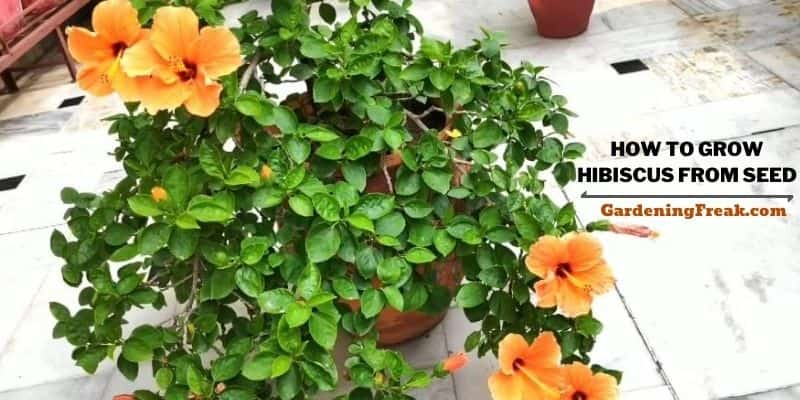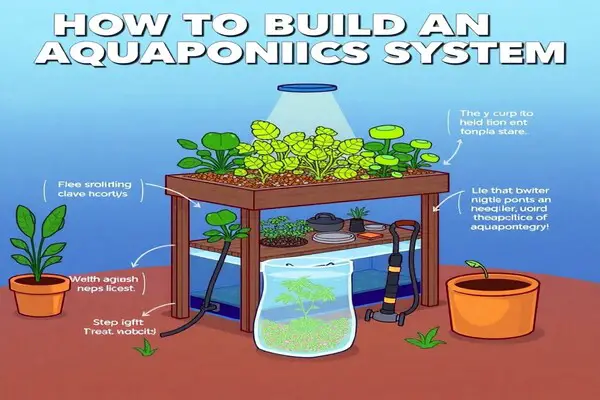For anyone who’s health-conscious and at the same time fond of flowers and gardening, hibiscus is bound to be at the top of their favorite planting list. Not only do hibiscus plants add more color and beauty to our garden, but also we can drink hibiscus tea for vital health benefits. Packed with antioxidants it helps to lower cholesterol and blood sugar levels. Moreover, the lovely flowers are a quick gift option for any occasions! No matter if you have a garden, yard or terrace – hibiscus can be easily grown typically everywhere. However, growing hibiscus from seeds can be tricky and might not be a cup of tea for everyone! If you’re a beginner and have no previous experience in growing hibiscus plants, don’t worry we have got your back! In this article, we are going to cover how to grow Hibiscus from seed.
How to grow hibiscus from seed
How to pollinate Hibiscus
Male and female reproductive organ of hibiscus flower: Stamen And Stigma Pads

A fun-fact about growing hibiscus is that they are self-pollinated plant. To be more precise, on the stamen which is the male reproductive organ of the plant, the pollen grains will germinate there at first. Eventually the pollen will be transferred to the stigma pads of the pistil known as the female reproductive organ of the plant from the stamen.
Manual pollination process
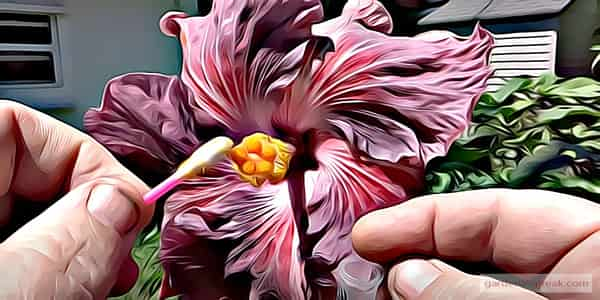
To keep the process simple and easy, you can take a cotton bud and rub it in the tiny white powdery like pollen on the top of the stamen and rub the cotton bud back onto the stigma.
Development of the seed pod
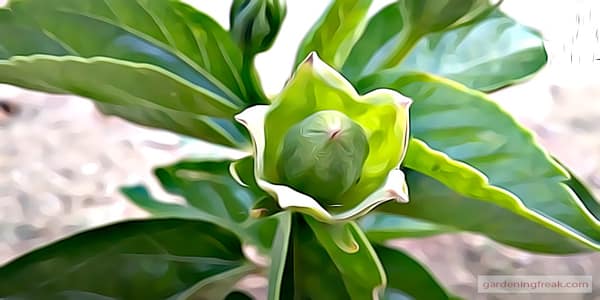
The pollen will move all the way to the ovules inside the ovary from the pistil. A seed pod will develop as soon as the flower has been pollinated. You will notice that the ovaries are starting to swell at the base. Gradually over the time, approximately within the next 40 to 98 days, seeds will develop inside of it.
What to do with hibiscus pods and how to get hibiscus seeds
Mature seed pod collection process
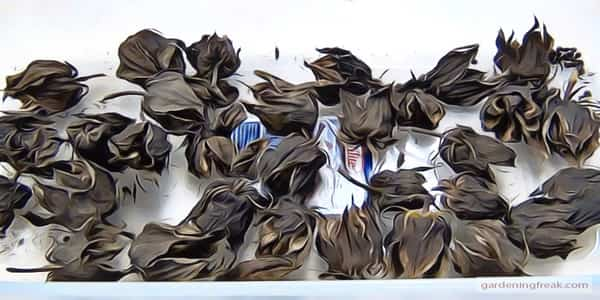
After the flower has swollen enough, wait for the hibiscus flower to dry and die, since only then can you see the seed pod at the bottom of the flower. Moreover, make sure to keep an eye on the seed pod when it slowly begins to turn dark brown. That indicates the ripening of the pods and if you are not well-prepared beforehand, the seed pod can burst and the small seeds can be split onto the ground. We know you can’t keep staring at it 24/7, that’s why if you’re concerned about this matter, you can tie a piece of net around the bloom like the below picture.
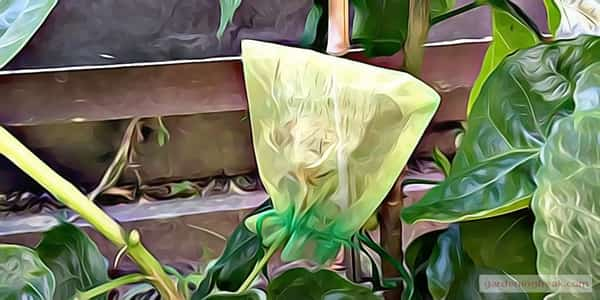
That’s it. Then relax. After that, gather the hibiscus flower seeds when the seed pod turns all dark brown and brittle.
Seed collection process:
Take a paper sack and hold it under the bloom, and gently shake the bloom so that the seeds can fall into the bag. At times, you may even need to break the pod open using your fingers.
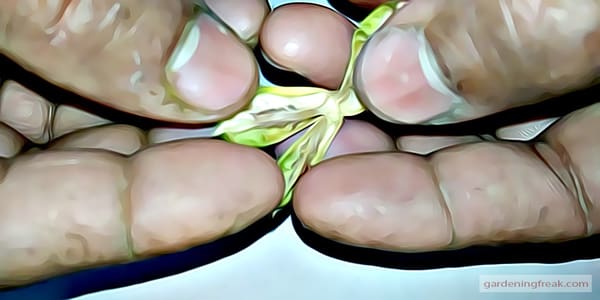
Most common hibiscus pods can give ten to thirty seeds, and altogether may have as many as a hundred seeds even more. The hibiscus seeds look dark brown, and are round and fuzzy.
Germinating hibiscus seeds in paper towel
Paper towels are one of the best mediums for germinating hibiscus seeds. Because they are immune to pathogens. Moreover, make things easy to handle ensuring the proper amount of moisture for sufficient germination. This procedure also makes it easier to know if your seeds have germinated because you need to closely observe them.
All the necessary steps required for this method :
Step 1 : Cut the paper towel
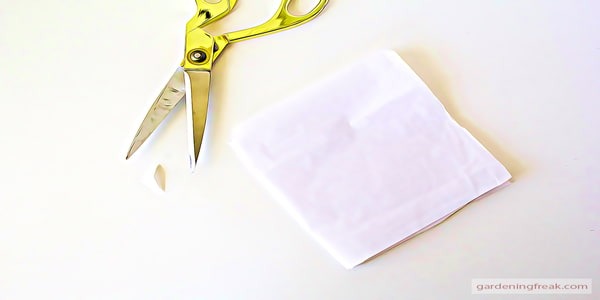
Take a fresh paper towel and cut it into two equal parts and dampen one of the halves.
Step 2 : Placement of the seed
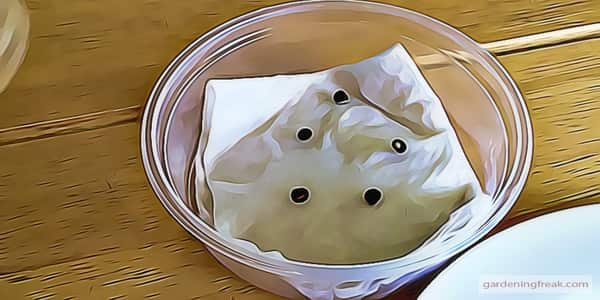
Place five to six seeds on one half and put the rest of the paper tower over the seeds. You can also put the seeds at the top of those 2 piece of paper towel. But make sure that your paper towel is wet enough.
Step 3: Take a transparent box
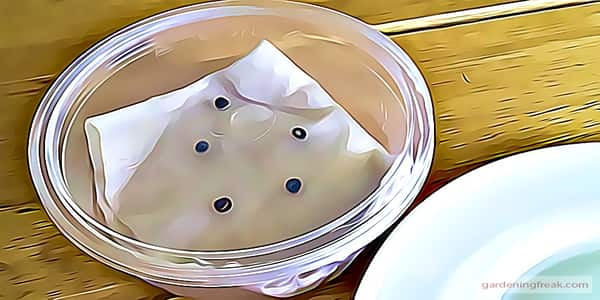
Put the paper towel containing the seeds inside the clear box and seal it tightly.
Step 4: Placement of the box

Keep the bag away from direct sunlight, better if room temperature is maintained.The transparent box plays the role of a mini version of a greenhouse that absorbs heat and vapour. You should carefully watch out for the seeds sprouting within a week.
Step 5: Placing the germinated seeds-plants on soil
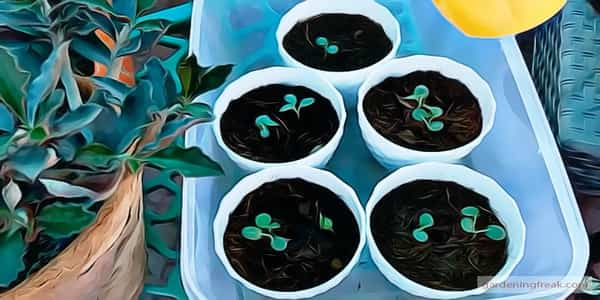
Instead of plunging the germinated seeds into the soil, rather dig a crater in the soil, hold the main root in it and gently cover with soil. If the seed is already showing leaves, make sure to keep them exposed above the soil. Within a few weeks, the successful germinated seeds and small plants become ready for outdoor planting if the weather outside is warm enough.
Important tips
A downside of using paper towels for this process is that you have to carefully ensure that the sprouted seeds have to be transplanted by using your hands. The tiny roots happen to be very fragile and should not be caused any types of interruption (like finger touch). Tweezers can be used on the seed cotyledons for transferring them to soil.
Growing hibiscus in pots after they get large
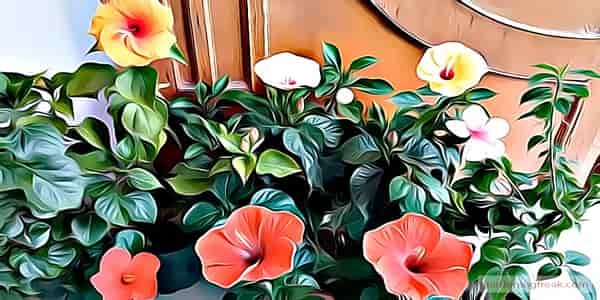
Grow hibiscus in a clay pot or any other suitable planters filled with good drained potting mix, such as compost and lava rock and some vermicompost Hibiscus is a tropical area plant by origin. It loves to enjoy warmth and sunlight. But it’s always important to place newly-planted hibiscus under the shade for about two-three weeks. It’s basically that the plant gets time to adjust with sun light. Then you can expose it to bright sunlight. Make sure that the pot has drainage holes in the bottom to prevent root rot and excess moisture from wilting the plant.
How to get lots of flower from hibiscus plants
There are some important things that you need to consider to get lots of flowers from the hibiscus plant . Those important things are mentioned below
Organic soil and draining system in soil:
The soil is the main food for your plant .Undoubtedly it has to be rich in various organic matter and needs to be well-drained soil.
Regular fertilizing
Hibiscus plants need fertilizer treatments once a month for better growth of flowers. You should opt for fertilizers that are high in both phosphorus and nitrogen and apply them throughout the growing season.
Sunlight
The delicate hibiscus stems are more susceptible to breakage. Therefore, though the hibiscus plant requires a lot of sun, it’s very important that you shelter it away from the wind.
Remove deadheads on regular basis
It’s wise to remove as many deadheads as possible to encourage growth, because wilted flowers waste a lot of sunlight and sap.
Water the plant routine basis:
In some cases, depending on the heat and humidity of your environment, you may need to water your plant daily to ensure better transpiration rate.
Frequently asked questions
Question: Can you grow perennial hibiscus from seeds and when?
Answer: All species of perennial hibiscus will grow well from fresh seed, given that they are sown in autumn or late winter.
Question: Where should I plant perennial hibiscus?
Answer: Perennial hibiscus have a high growth rate when exposed to bright sunlight however will tolerate some light shade too. For getting more blooming flowers, 6 hours of direct sunlight per day is enough.
Question: Are used coffee grounds good for hibiscus plants to get more flowers?
Answer: Yes. Used coffee grounds are best used as a fertilizer or if added to compost, where they can break down further.
Question: Do hibiscus flowers regrow every year?
Answer : Hardy hibiscus flowers do regrow every year and bloom all summer. On the other hand, tropical hibiscus have flamboyant blooms in a wide range of colors and can survive during the winter.
Question: What are the best fertilizers for hibiscus plants?
Answer: Hibiscus plants require fertilizers for better growth with a medium amount of nitrogen (N), a low amount of phosphate (P), and a high amount of potassium (K) – such as 7-1-2 or 12-4-8.
Question: What is the lifespan of a hibiscus plant?
Answer: Some older garden varieties for tropical hibiscus have been known to live for 50 years. Some of the recent hybrids may have a lifespan of 5-10 years.
Question: How can I tell if the hibiscus plant that I growing is hardy or tropical?
Answer: When the leaves are circular heart-shaped and when the color of leaves is dull it is a hardy hibiscus. Check the color of flowers as well. Hardy hibiscus flowers have pink, red, or white flowers. Tropical hibiscus has shinney salmon, peach, coral, orange, cream even yellow blooms.
Question: Can you grow hibiscus indoors?
Answer: Yes you can grow the tropical ones in 4″ pots indoors in presence of bright sunlight and regular watering is a must. But excess moisture may build in if you don’t allow drainage holes in case if your carpets get wet! It’s also important to ensure that the indoor environment maintains a warm temperature, as tropical plants thrive in warmth. Additionally, if you’re interested in how to grow arugula in containers, remember to choose a slightly larger pot with adequate drainage, as these leafy greens prefer well-drained soil and need enough space for their roots to expand. With the right care and attention, you can successfully cultivate a variety of tropical plants and enjoy fresh arugula in your kitchen!
Last words
Because hibiscus flowers have big bell-shaped petals and bold colors, you can see them from across your yard and enjoy the beautiful sight sitting indoors. Good news is that they grow perfectly not only in gardens or balconies but in every type of planters on sunny patios and porches. Not only do they add exceptional beauty to your garden but eventually at the end of the day it feels lovely and overall is a remarkable experience to be sipping cold coffee on a hot sunny day and to be looking at your own grown hibiscus flowers! But the main problem of hibiscus plant is that it’s a very common victim of mealy bug. But you can also control this pest by attracting ladybug which is a beneficial insect and like to eat mealy bug.
So that’s all from this article. Hope this article will help you in your gardening journey and help you to know about How to grow hibiscus from seed.

